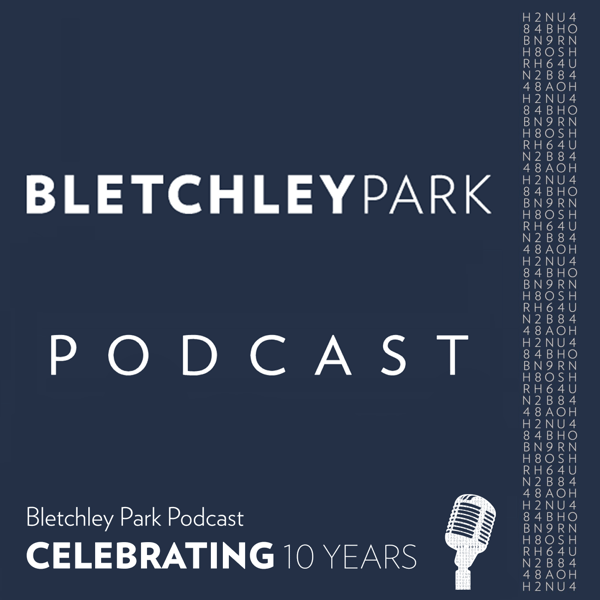Extra - E47 - How computers were used against Hitler
Bletchley Park
Bletchley Park
4.8 • 177 Ratings
🗓️ 4 December 2015
⏱️ 42 minutes
🧾️ Download transcript
Summary
December 2015
Professor Jack Copeland, Director of the Turing Archive for the History of Computing, celebrated another forgotten hero of Bletchley Park, Max Newman, as part of the Bletchley Park Presents lecture series. His August talk ‘How Computers Were Used Against Hitler’, was a huge success.
Professor Copeland explored the story of little-recognised Codebreaker Max Newman, whose work was fundamental to the construction of the first electronic computer, Colossus. The section he founded and led at Bletchley Park was named after him; the Newmanry worked on the strategic-level Lorenz cipher, used by Hitler and the high command. Newman went on to establish the Royal Society Computing Machine Laboratory. In his talk, Professor Copeland looked back at his achievements and then sat down for a chat with Podcast Producer, Mark Cotton.
Picture: ©Bletchley Park Trust
#BPark, #Bletchleypark, #Lorenz, #Enigma, #Colossus, #WW2, #History,
Transcript
Click on a timestamp to play from that location
| 0:00.0 | The |
| 0:07.0 | The From the home of the co-breakers and the birthplace of modern computing, this is the Bletchley Park podcast. |
| 0:41.9 | Welcome to another Bletchley Park podcast Extra. |
| 0:48.0 | Professor Jack Copeland is a leading expert on Alan Turing, but last time he visited Bletchley Park, |
| 0:52.5 | it was to talk to a pack teleprinter hall about another code-breaking genius. |
| 0:55.7 | This time he looked into how computers were used against Hitler. Max Newman ran a section named after him, the Newmanry, which focused on the strategic |
| 1:01.4 | high-level cipher Hitler was using to communicate with his high command, Lawrence. |
| 1:14.8 | Max never worked on Enigma. |
| 1:21.4 | He attacked this entirely different machine, which the British codenamed the Tunney machine. |
| 1:25.2 | There is a real Tunney machine here in Bletchley Park. |
| 1:28.5 | You can go and gaze at it in awe, if you like, in Block B, |
| 1:34.6 | where it's got a huge red German flag with a swastika on hanging behind it. It looks very striking. |
| 1:41.1 | You can't miss it if you go to Block B. Enigma was sort of old technology by the time the war started. |
| 1:46.3 | The Enigma machine was invented, you know, kind of like 20 years or more before the war. |
| 1:55.4 | It was really kind of slow and clunky and only just about suitable for the purposes that the German military wanted to use it for. |
| 2:01.9 | It needed an enormous number of people in order to encrypt and decrypt a message using Enigma. |
| 2:04.6 | You needed three operators at each end of the link. |
| 2:10.3 | There was the cipher operator who would type the German plain text at the keyboard of the Enigma machine. |
| 2:11.4 | And as the cipher clerk typed at the keyboard, letters would light up at the lampboard. |
| 2:16.5 | And the cipher clerk would type the |
| 2:18.7 | plain text, the German message, and then the letters of the cipher text would light up at the |
| 2:24.5 | lampboard. The cipher clerk had an assistant who wrote down the letters of cipher text, painstakingly |
... |
Please login to see the full transcript.
Disclaimer: The podcast and artwork embedded on this page are from Bletchley Park, and are the property of its owner and not affiliated with or endorsed by Tapesearch.
Generated transcripts are the property of Bletchley Park and are distributed freely under the Fair Use doctrine. Transcripts generated by Tapesearch are not guaranteed to be accurate.
Copyright © Tapesearch 2025.

